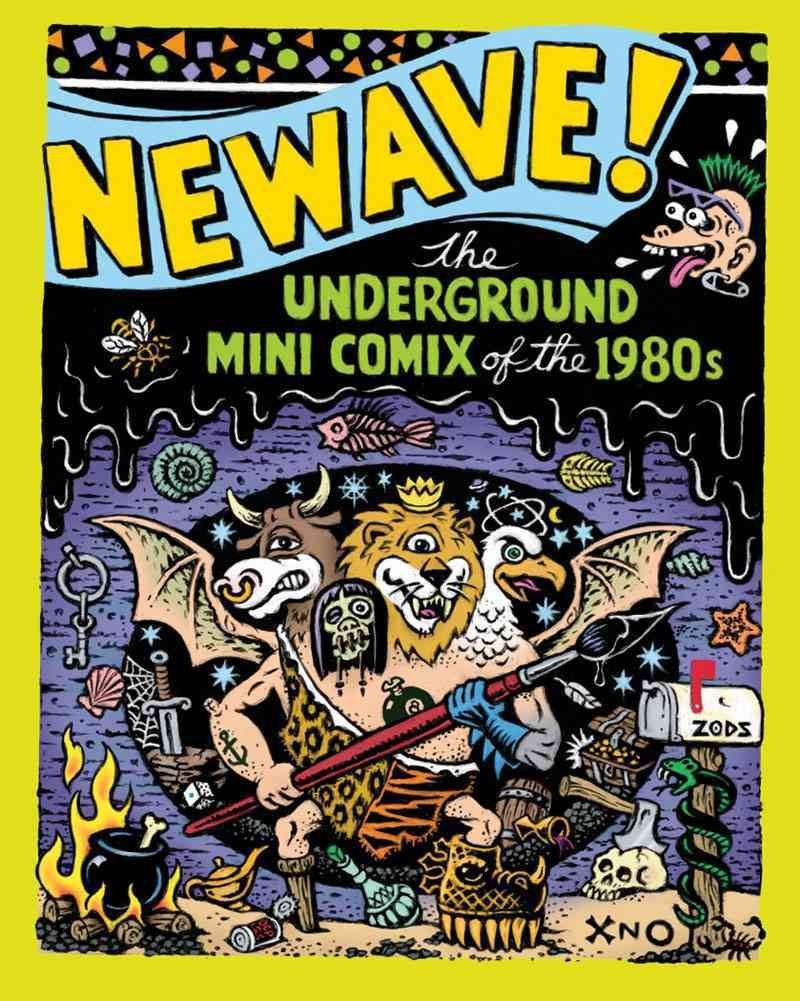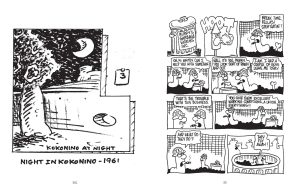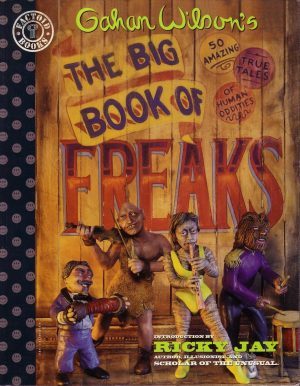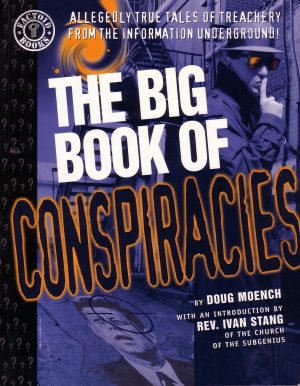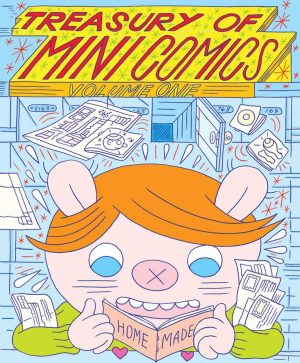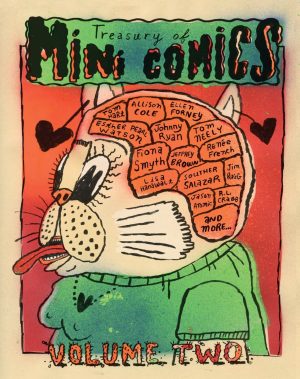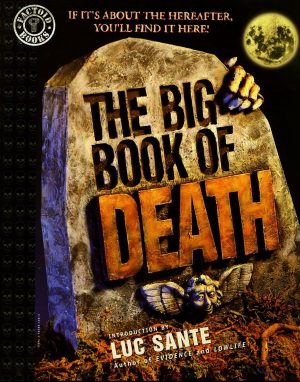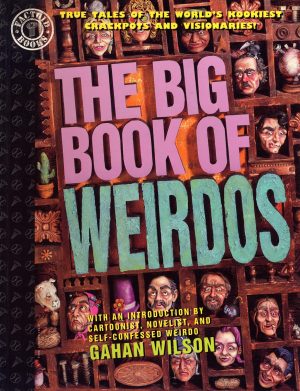Review by Win Wiacek
Everybody has at some stage in their lives used pictures to tell stories. It’s a fundamental step in the cognitive development of children and for some that magic never goes away. For most people the crushing weight of the world squelches the joy of creation so we become observers and consumers rather than makers, but a privileged few carry on: drawing, exploring, and in some cases, where technology allows, producing and sharing.
This book explores, recounts and celebrates those driven artisans who continued the traditions of the anything goes 1960s and 1970s Underground Comix movement, craving a vehicle of expression, not caring about money, and with enough time to draw – or gather – artwork. It was then laboriously photocopied, cut, folded, and stapled before distribution of the miniscule but marvellous results. Mini comics people are exceptionally generous, contributing work at the drop of a hat: just check out the huge array of notable creators listed below.
Just by way of definition, most mini comics were home produced pamphlets using borrowed or when necessary paid for print processes. The most popular format was an 8½ x 11 inch sheet, folded twice, and printed at local copy-shops (or made on school/work repro systems like early Xerox, Photostat, Mimeo or Spirit Banda machines) on letter-size – or any – paper. Because they weren’t big, they were called mini comics. Duh!
Although this book concentrates on a specific time, place and creative ethos, the phenomenon was truly worldwide and covered all genres from superhero knock-offs to the sexually explicit, violent, political and drug-related work that typifies Newave! Anybody who wanted to and had access to the technology could make their own comics.
In this 892 page collection the many craftsmen who began the tradition that led inexorably to today’s thriving Alternative and Small Press publishing movements as well as the current internet comics phenomenon, discuss at length their motives and methods. Naturally the best of that adventurous decade are reprinted in crisp black and white. Among the thousands of people who have made or contributed to mini comix many have gone on to more well-received and popular things.
The sheer boundless enthusiasm and joy of making comics is celebrated in this astonishingly vast, incredibly heavy and yet still pocket-sized hardback collection, with over 700 pages of the very best of that decade’s adult cartoons on show, accompanied by not just historical information on key publishers such as George Erling (sample spread left), Mary Fleener, Brad Foster, Tom Hosier, Roger May, Artie Romero, Ed Roth, Bob Vojtko (sample spread right), J.R. Williams, Steve Willis, Dennis Worden, Bob X, XNO and others but also a list of website addresses so you can check out how the compulsion to create has survived into the 21st century.
Newave! is a joy for every fan of the art-form as long as they’re old enough to vote and strong enough to lift the thing.
Editor Michael Dowers would subsequently be responsible for two volumes of the even more exhaustive Treasury of Mini Comics.
